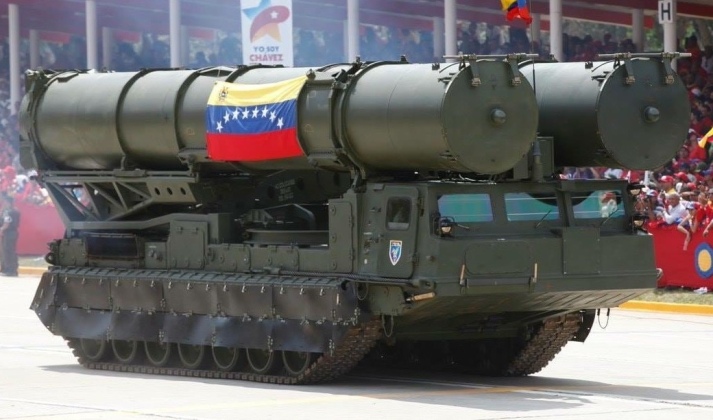News
How F-35 Operations Off Venezuela’s Coast Could Provide Key Electronic Intel on its S-300 Air Defences
Venezuelan air defences on October 2 detected five F-35 fighter aircraft approaching its territory from the north over the Caribbean Sea,at a time of heightened tensions between the two states. Venezuelan Defence Minister Vladimir Padrino described the incident as a “provocation,” observing: “They are combat aircraft. Combat aircraft that U.S. imperialism has dared to approach the Venezuelan coast.” The incident follows the deployment of F-35s by both the U.S. Air Force and by the Marine Corps in Puerto Rico in September, as part of a broader surge in the American military presence in the region which has included the deployment of a carrier group and a Los Angeles class nuclear powered attack submarine. MQ-9 Reaper attack drones, strategic intelligence gathering and maritime patrol aircraft, and the special forces mothership Ocean Trader have also been stationed in the region.
The signifiant electronic intelligence collection capabilities of the F-35 allow it to collect valuable information on Venezuela’s air defence capabilities, which are considered the most formidable in Latin America. The fighter integrates an unprecedented array of passive antennas embedded across its airframe, which provide signals information to its computers. Use of advanced interferometry allows the positions of air defence systems to then be determined. F-35s have notably been deployed to provide key intelligence on adversary air defence systems in the past, including in the Israeli assault on Iran in June, and throughout much of the Russian-Ukrainian War.
Elaborating on the F-35’s ability to gather valuable intelligence on adversary air defences, commander of the U.S. Air Force 388th Fighter Wing Colonel Craig Andrle observed regarding operations in Eastern Europe: “We weren’t crossing the border. We’re not shooting anything or dropping anything. But the jet is always sensing, gathering information. And it was doing that very, very well… We had all hoped it was going to work like it’s supposed to, but then to see it actually perform very, very well in that role was great.”

Venezuela’s air defence network poses a significant potential challenge in the event of an American attack on the country, with its S-300VM long range surface-to-air missile system being particularly well suited to providing an asymmetric defence against a large scale air assault have The system was designed to remain highly mobile to support ground forces, and uses tracked MT-T launch vehicles allowing for off-road operations, its command centre, radars, and missile launchers all able to redeploy in under 10 minutes. The systems’ dispersed sensors also allow it to engage low observable targets at medium ranges, while against non-stealth targets operating at high altitudes its engagement range extends to 250 kilometres. The difficulty of engaging such systems makes the F-35’s advanced electronic intelligence capabilities particularly valuable.












